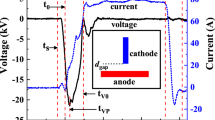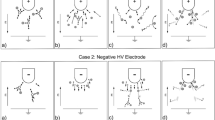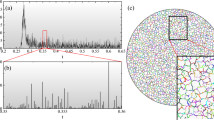Abstract
IF a thick electric spark is made to glide along the surface of a piece of an ordinary window glass, a faint trace of the spark track is left on the glass surface. On examining this track under microscope, we find a large number of hair-like cracks running roughly parallel to each other and transverse to the axis of the track. It is interesting to observe that the cracks undergo further development even if left undisturbed. Minor secondary cracks gradually appear, filling up the space between the primary cracks with complicated networks. A thin surface layer bounded by these cracks begins to be peeled off, showing thus a mozaic of Newton rings. This latter pattern becomes visible an hour after the sparking and is most marked along the middle zone of the track.
This is a preview of subscription content, access via your institution
Access options
Subscribe to this journal
Receive 51 print issues and online access
$199.00 per year
only $3.90 per issue
Buy this article
- Purchase on Springer Link
- Instant access to full article PDF
Prices may be subject to local taxes which are calculated during checkout
Similar content being viewed by others
Author information
Authors and Affiliations
Rights and permissions
About this article
Cite this article
TERADA, T., HIRATA, M. & YAMAMOTO, R. Microscopic Cracks produced by Electric Spark. Nature 129, 168–169 (1932). https://doi.org/10.1038/129168b0
Issue Date:
DOI: https://doi.org/10.1038/129168b0
Comments
By submitting a comment you agree to abide by our Terms and Community Guidelines. If you find something abusive or that does not comply with our terms or guidelines please flag it as inappropriate.



